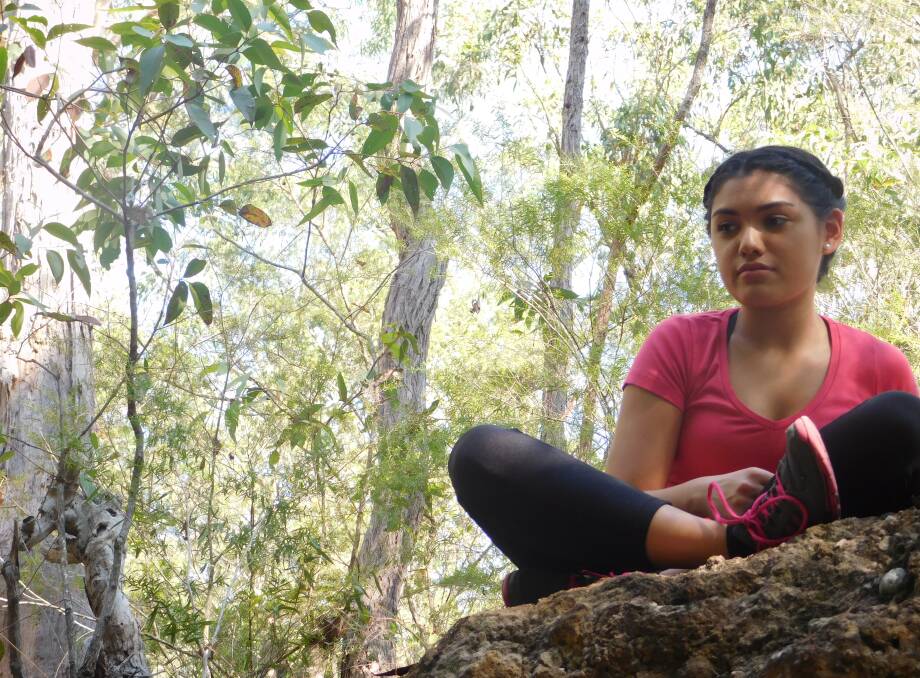
IT is a special place for Awabakal women.
Subscribe now for unlimited access.
or signup to continue reading
The Butterfly Cave at West Wallsend has for thousands of years been used as a traditional meeting and ceremonial place for women’s business.
Its cultural value is now under threat from the proposed final stages of the massive Roche developed Appletree Grove Estate, the traditional owners say.
Stages 7 and 9 of the estate will see housing developed to within 20 metres of the cave and a road constructed within 10 metres.
Julie Brown is an Awabakal woman who said the cave was still being used for women’s business.
Ms Brown, with her daughter Jezzeka Brown, 22, visits the cave regularly.
“It’s secret business, cultural stuff that is only for women,” Ms Brown said. “It is significant for our women and the continuity of our line.
“We go with our aunts and cousins. Our family group go out there and do cultural stuff.”
The cave was afforded protection when in 2013 it was declared an Aboriginal Place. However, its listing only protects the cave to a 20-metre radius from its centre.
Ms Brown said the bushland surrounding the cave ensured their cultural practises were kept private and was also important because it contained the traditional journey path to the cave. It is this land that is set to be swallowed up by the development.
“[When I go there] I am walking in my grandmother’s footsteps. It’s my connection to my ancestors,” Ms Brown said.
“It’s so isolated and preserved, you know it is just what they saw.
“You get taught by the elders as you go … all the healing plants, herbs and seeds on the way that are important to us … and the stories that go with them.
“The songlines will be built over, either a fence or a house. Once it’s populated you wonder what is going to happen.
“What if we go out there and get painted up, we don’t want neighbours watching that.
“We are just asking for a little bit of space.”
In December 2016, the Environmental Defenders Office (EDO) worked with the Awabakal women to lodge a proposal with the Office of Environment and Heritage (OEH) to extend the curtilage around the cave.
“One of the key features of the cave is the importance to insure privacy,” EDO principal solicitor Elaine Johnson said.
“Seclusion is a key element to what is listed as a value of the cave.”
However, in June the OEH advised it would not progress the proposal.
In an untested area of the law, the EDO is now working with the women to explore whether the development of the final stages of the estate would constitute desecration of a declared Aboriginal Place under the NSW National Parks and Wildlife Act.
In July, the NSW Aboriginal Land Council made representation to the Minister for Environment and Energy Josh Frydenberg under the Aboriginal and Torres Strait Islander Heritage Protection Act to set a 100m radius around the cave.
This would effectively stop the final stages of the development.
The land council, on behalf of the Awabakal Local Aboriginal Land Council, has argued the development of the final stages would lead to the cave’s loss of “significance as a private and secluded place for Awabakal women”.
It also said the development would impact the site’s significance as a bush tucker food source through removal of vegetation and destroy traditional stone arrangements.
Additionally, the diversion of water courses would impact traditional uses of the area.
There are also concerns the site would be accessed more frequently by people with no understanding of its cultural significance.
Lake Macquarie Council wrote to the minister in support of the land council’s representation.
An application by Roche for the construction certificate to allow the final stages of the estate to proceed was lodged with Lake Macquarie Council in November 2016. The certificate is yet to be issued.
Lake Macquarie Council is the consenting authority, meaning it is required to approve technical matters relating to the development of the estate.
The development application for the estate was assessed by the council in 2011, and passed on, as is required for developments of “regional significance”, to the Joint Regional Planning Panel (JRPP) for a decision.
Appletree Grove was approved for subdivision in 2012.
Lake Macquarie Councillor Brian Adamthwaithe said he agreed the cultural significance of the entire Butterfly Cave site was under threat.
“It’s all good to protect the cave, but if you are not protecting it in a cultural context it really does not recognise the cultural significance of the First Australians,” Cr Adamwaithe said.
He said all the council could do as the consenting authority was “assiduously make sure things are done as best they can, given the situation we are dealt”.
A spokesperson for the Department of Environment and Energy said Minister Josh Frydenberg had appointed an independent reporter as required under the Act to provide a report for his consideration of the land council’s representation.
“The Department of the Environment and Energy is currently reviewing this report, which will be provided to the Minister for his decision as soon as possible,” the spokesperson said.
Roche Group declined to comment but issued a statement. It pointed to the fact the estate was approved prior to the Butterfly Cave’s declaration as an Aboriginal Place. It also noted the Roche Group supported the application for the Butterfly Cave to be recognised as an Aboriginal Place.
“If a greater separation between the Butterfly Cave and the edge of the development was deemed necessary, the relevant decision-makers would have required it as part of the approval,” the statement said.


